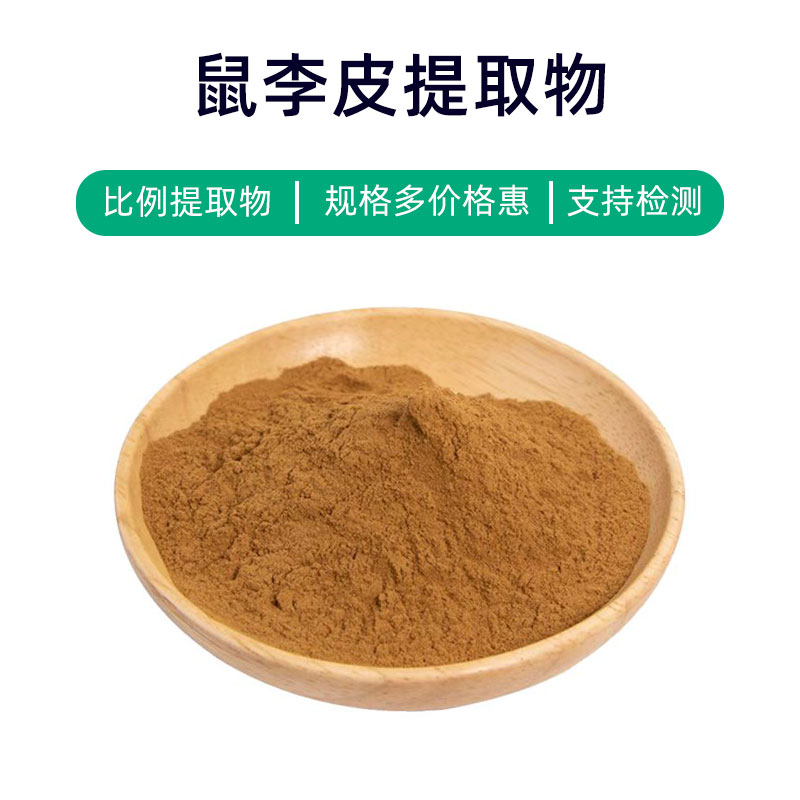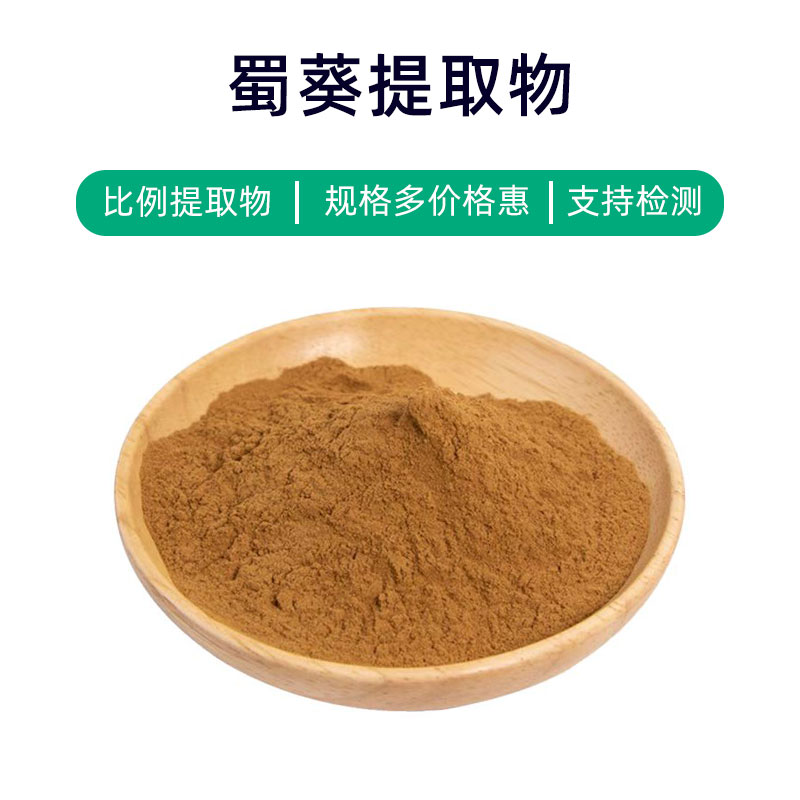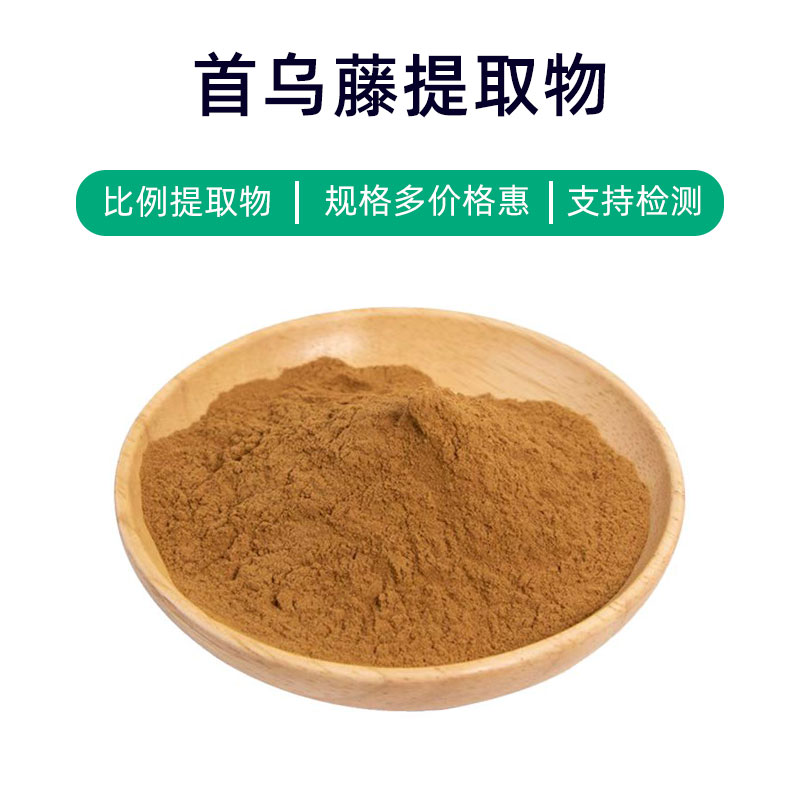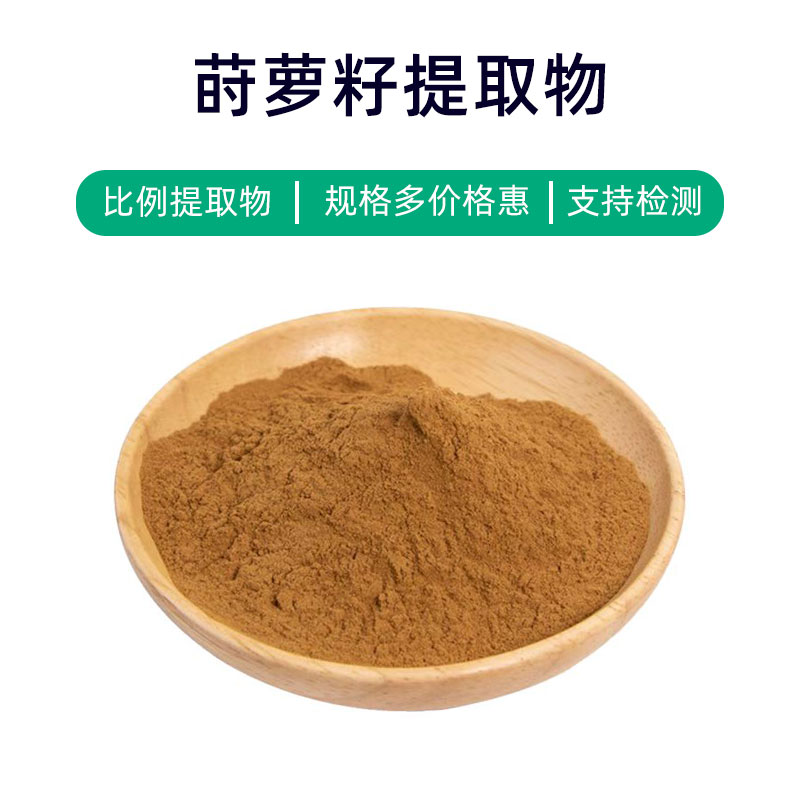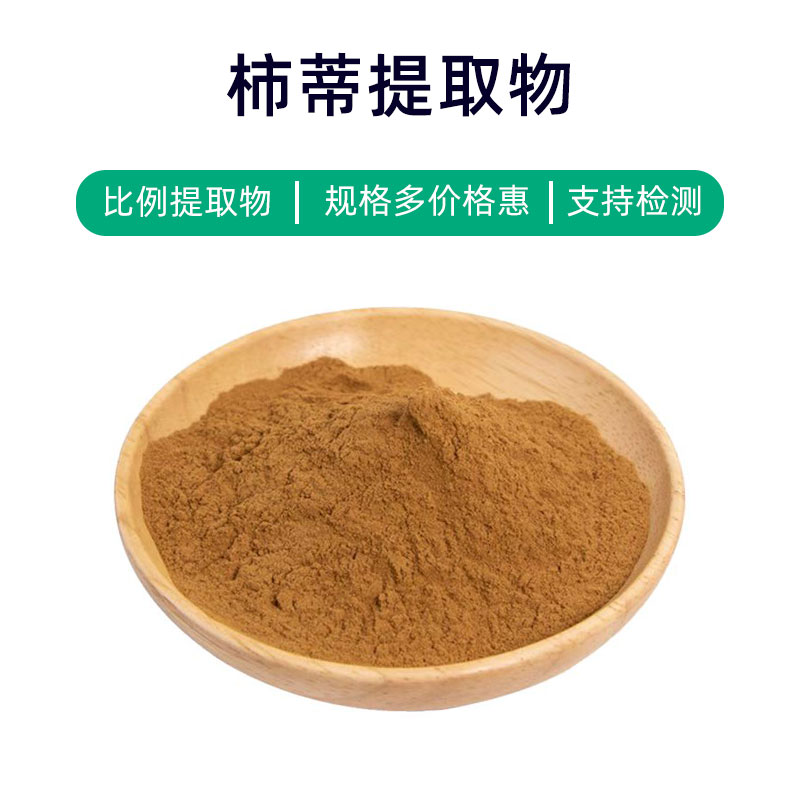Introduction to Mugwort Leaf Extract
Mugwort Leaf Extract is a natural plant extract obtained from Mugwort (Artemisia argyi), primarily consisting of volatile oils, flavonoids, polysaccharides, and other active components. These ingredients provide Mugwort Leaf Extract with various benefits and applications.
Firstly, Mugwort Leaf Extract has antioxidant properties, capable of neutralizing free radicals and delaying skin aging, thus making skin appear younger and smoother. Secondly, it exhibits anti-inflammatory and antibacterial effects, helping to alleviate skin inflammation and reduce sensitivity and discomfort. Additionally, Mugwort Leaf Extract has been shown to regulate immune function, improving the skin's immune status and enhancing its self-repair abilities.
In the medical field, Mugwort Leaf Extract is commonly used in the treatment of skin inflammation conditions such as eczema and dermatitis, as well as in skincare formulations to improve skin health. In cosmetics, it is widely found in skincare products, masks, and lotions, offering comprehensive protection and repair for the skin due to its antioxidant, anti-inflammatory, and antibacterial benefits.
Production Process of Mugwort Leaf Extract
The production process of Mugwort Leaf Extract mainly includes the following steps:
- Raw Material Collection and Processing: Fresh Mugwort leaves are collected as raw materials. After collection, the leaves undergo preliminary processing, which includes cleaning and removing impurities to ensure the quality and purity of the raw material.
- Extraction Process: The processed Mugwort leaves are sent to extraction equipment, typically using water or organic solvent extraction methods to extract the active components. During the extraction process, parameters such as temperature, pressure, and extraction time are controlled to maximize the stability and activity of the active ingredients.
- Concentration and Separation: After extraction, the resulting liquid is concentrated, often through evaporation or vacuum concentration. Next, separation equipment is used to isolate the desired extracts from the concentrated liquid.
- Purification and Refinement: The extract undergoes further purification and refinement to remove residual impurities and solvents, enhancing the purity and activity of the extract.
- Drying and Milling: The refined extract is then dried, typically using spray drying or vacuum drying methods, converting it into a powder form. Afterward, the powder is milled and screened to control particle size and granule dimensions to meet various product requirements.
- Packaging and Storage: Finally, the finished Mugwort Leaf Extract is packaged, usually in airtight containers to avoid exposure to air and moisture, preserving its stability and activity. It should be stored properly in a dry, cool, and dark environment, avoiding high temperatures and direct sunlight to extend its shelf life and effectiveness.
Benefits and Side Effects of Mugwort Leaf Extract
Mugwort Leaf Extract is a natural plant extract with several benefits, primarily including:
- Antioxidant Effects: Rich in various natural antioxidants such as polyphenols and flavonoids, Mugwort Leaf Extract neutralizes free radicals, reducing oxidative stress on cells and protecting cell health.
- Anti-inflammatory Effects: Studies have shown that the active components in Mugwort Leaf Extract exhibit significant anti-inflammatory properties, capable of inhibiting the onset and progress of inflammation and alleviating pain and discomfort caused by inflammation.
- Antibacterial Effects: Mugwort Leaf Extract contains multiple compounds with antibacterial activity, which can inhibit the growth of bacteria and fungi, making it useful for preventing and treating skin infections.
- Skin Moisturizing and Repair: The extract boasts excellent moisturizing properties that enhance the skin's ability to retain moisture, reducing water loss, while promoting skin cell regeneration and repair, helping to improve dryness and roughness.
- Anti-aging Effects: The polyphenols in Mugwort Leaf Extract have anti-aging benefits, slowing down the skin aging process and promoting collagen and elastin synthesis, thus maintaining skin elasticity and firmness.
- Regulation of Blood Sugar and Lipids: Research indicates that Mugwort Leaf Extract has certain blood sugar and lipid-lowering properties, improving blood glucose and lipid metabolism, showing potential benefits in preventing and assisting in the treatment of diabetes and hyperlipidemia.
Although Mugwort Leaf Extract offers numerous benefits, precautions should be taken:
- Allergic Reactions: Some individuals may experience allergic reactions, and a skin sensitivity test should be performed before use. Discontinue use if discomfort occurs.
- Usage Directions: Follow product guidelines for correct usage to avoid overuse or prolonged application.
- Avoid Eye Contact: Avoid contact with eyes; if it occurs, rinse immediately with water.
- Caution in Special Populations: Pregnant and breastfeeding women, as well as those with severe skin diseases, should use under a doctor's guidance to avoid unnecessary risks.
Overall, Mugwort Leaf Extract has broad application prospects, playing a crucial role in the medical, dietary supplement, and cosmetic fields. However, caution is advised during use, following product instructions to ensure safe and effective performance.
Application Scenarios and Dosage of Mugwort Leaf Extract
Mugwort Leaf Extract has extensive applications in medicine, food, and cosmetics, with the primary usage and dosages as follows:
- Applications in Medicine:
- Skin Inflammation: The extract's anti-inflammatory and antibacterial properties make it suitable for treating skin conditions like eczema and dermatitis. Usage: Dilute the extract and apply to affected areas 2-3 times daily.
- Antioxidant Supplements: Rich in antioxidants, it can be used in formulas for supplements that provide anti-aging and immune-boosting benefits. Usage: Take as recommended on the product label, usually 1-2 times daily.
- Digestive Health: Mugwort Leaf Extract promotes digestion and improves gastrointestinal function and can be included in digestive medications or supplements. Usage: Follow dosage suggestions from a physician or product guidelines.
- Applications in Food:
- Food Additive: Used as a natural food preservative with antioxidant and antibacterial properties to extend shelf life. Usage: Follow food additive usage standards.
- Flavoring Agent: Offers unique aroma and flavor, used as a seasoning in food. Usage: Add as needed according to food processing guidelines, but avoid overuse.
- Applications in Cosmetics:
- Skincare Products: Used in recipes for skincare products, offering moisturizing, anti-aging, and skin repair effects, often found in creams and masks. Usage: Apply as directed on the product label to clean skin and massage until absorbed.
- Perfumes and Fragrances: Due to its unique scent, it can be used in the formulation of perfumes and scents. Usage: Add the appropriate amount of extract according to the formulation.
When using Mugwort Leaf Extract, it is essential to consider the following:
- Product Quality: Choose products from reputable manufacturers to ensure quality and safety.
- Adhere to Instructions: Use as directed on the product label to avoid excessive use.
- Skin Testing: When using skincare products, it’s advisable to perform a skin test on the inner arm or behind the ear to rule out allergic reactions before full use.
- Caution for Pregnant Women and Children: Consult a physician before use to avoid unnecessary risks.
In summary, Mugwort Leaf Extract has diverse applications in medicine, food, and cosmetics, but it is crucial to use it in moderation, choose appropriate products, and follow product guidelines to ensure safety and effectiveness.
Introduction, Distribution, and Growth Environment of Mugwort
Mugwort (scientific name: Alpinia oxyphylla Miq.) is a common perennial herb in the ginger family, with its dried fruits often being used. Here’s an overview of the source plant of Mugwort Leaf Extract, its distribution, and growth environment:
- Plant Overview:
Mugwort is an evergreen herbaceous plant with an upright stem typically 1-2 meters tall, featuring alternate, oval or elongated leaves that are smooth, serrated at the edges, deep green, and glossy. The flowers are small, white, and fragrant, with a characteristic ginger-like scent. The fruit is conical or oval and turns red when ripe. - Distribution:
Mugwort mainly grows in southern regions of China, including provinces such as Guangdong, Guangxi, Fujian, Yunnan, Jiangxi, Hunan, and Guizhou. It is commonly found in mountain hills, valleys, ravines, forest edges, and grasslands in these areas. - Growth Environment:
Mugwort thrives in warm, humid conditions and prefers well-draining soil with plenty of sunlight. Typically found at altitudes of 200-800 meters, it is adaptable to moderate temperatures, resistant to cold but not extreme cold, and shows strong climate adaptability. - Reproduction and Growth:
Mugwort can reproduce through seeds, with options for propagation through division or cuttings as well. When sowing seeds, fertile, loose, well-draining soil is preferred, maintaining adequate moisture and airflow to encourage germination and growth. Throughout its growth, timely weeding, fertilization, and appropriate light and moisture levels are essential for its development. - Main Production Areas:
The main production areas of Mugwort in China include Guangdong, Guangxi, and Fujian, where the climate and soil conditions favor its growth, resulting in high yields.
In conclusion, Mugwort is a common herbaceous plant primarily distributed in southern China, favoring warm, humid environments. Important production areas include Guangdong, Guangxi, and Fujian. Under suitable conditions, Mugwort thrives abundantly, providing rich resources for Mugwort Leaf Extract production.
Processing, Storage, and Preservation of Mugwort Leaf Extract
The processing of Mugwort Leaf Extract typically includes the following steps: First, raw materials are cleaned to remove impurities and surface dirt. Next, grinding and milling occur so that the cleaned Mugwort leaves can be processed into a powder for extraction. The extraction method usually involves water or ethanol extraction, where the milled Mugwort is mixed with the extraction agent for soaking, followed by concentration and evaporation of the resulting liquid to yield the extract. Finally, it is dried and powdered to the desired granule or powder form.
For storage, Mugwort Leaf Extract should generally be kept in a cool, dry, and well-ventilated area, avoiding direct sunlight and high temperatures to prevent oxidation and degradation. Additionally, it should be sealed to avoid moisture and contamination, extending its shelf life. Under appropriate storage conditions, Mugwort Leaf Extract typically maintains a long effective period.
Monica Sun is a seasoned expert in the plant extraction industry with over a decade of experience in research and production. She specializes in the extraction and purification of plant active ingredients, focusing on driving innovation in natural product applications. Monica has participated in the development of multiple functional plant extracts, delivering high-value natural raw material solutions for the health food, pharmaceutical, and dietary supplement sectors.









